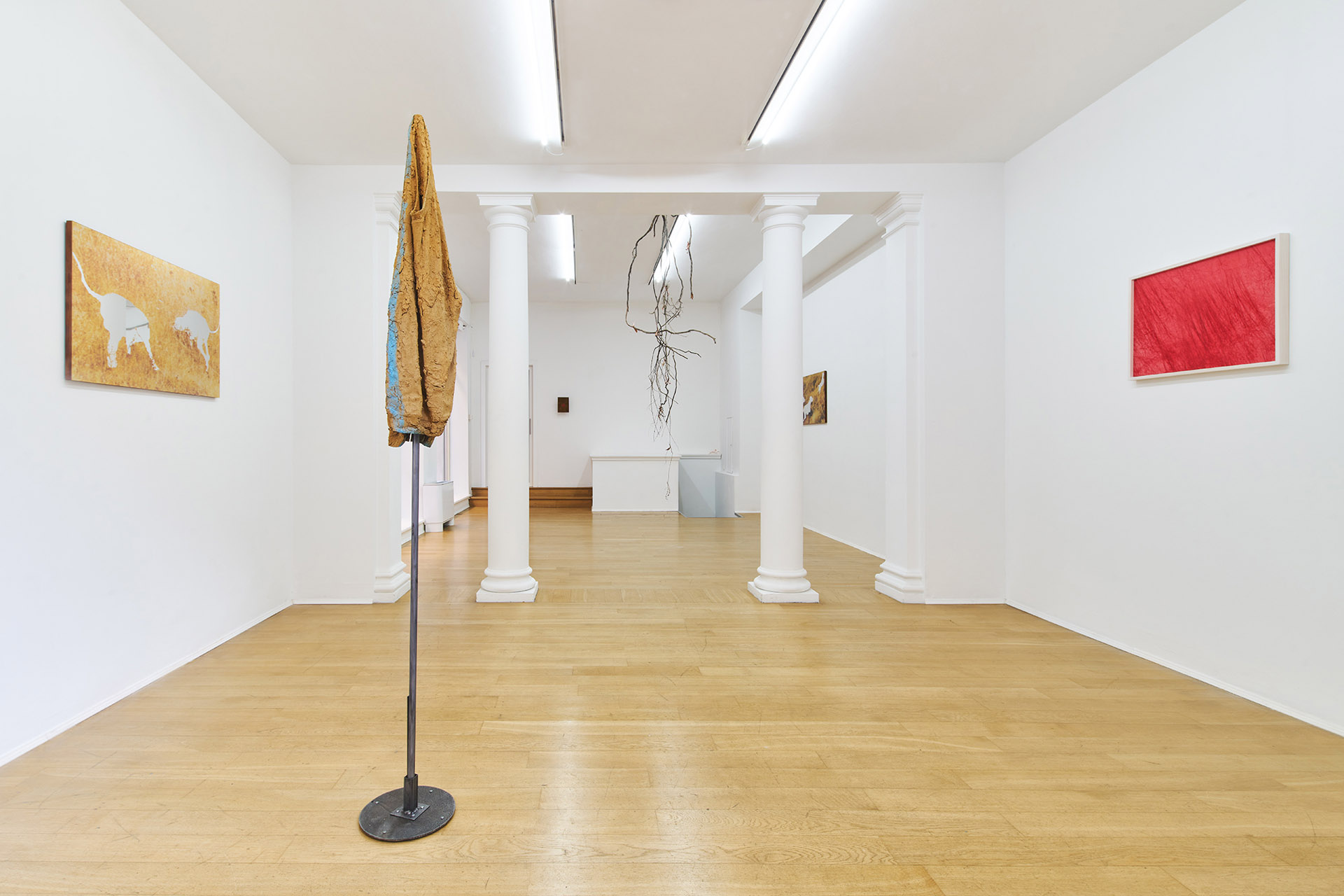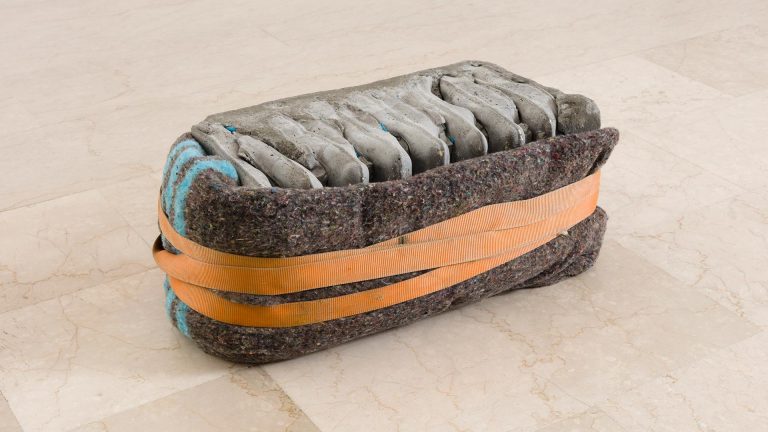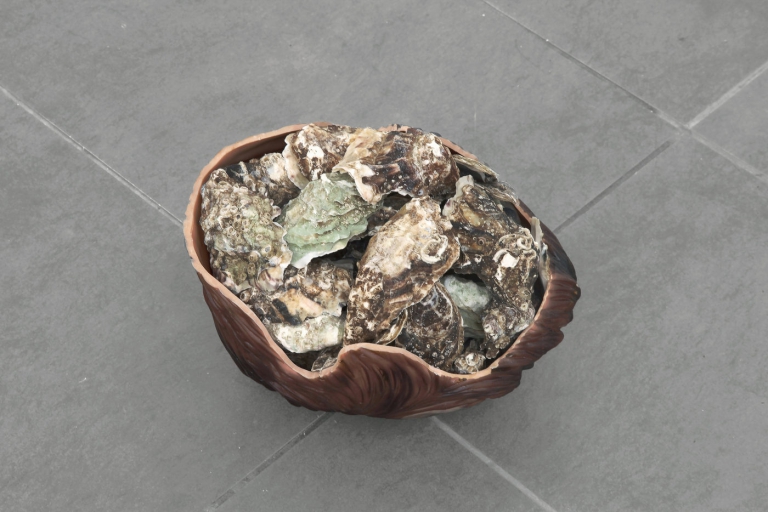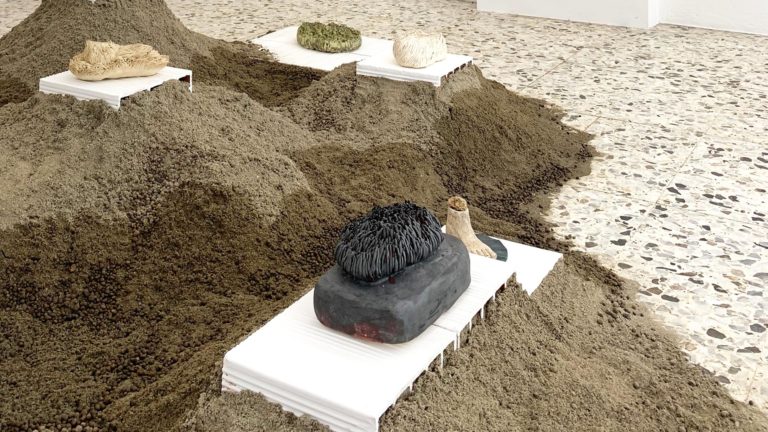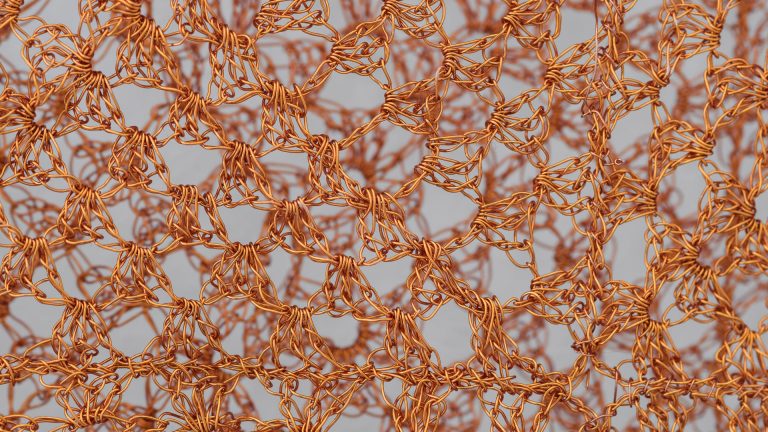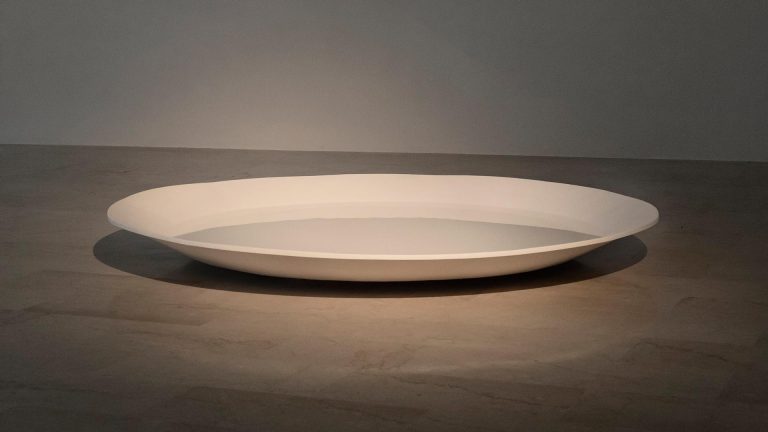Artist: Marina Cavadini, Edoardo Caimi, Lucia Cristiani, Edoardo Manzoni
Exhibition title: Pelle d’Oca
Venue: The Address, Brescia, Italy
Date: October 29 – December 21, 2021
Photography: all images copyright and courtesy of the artist and The Address, Brescia
Goose bumps are a mechanism that someone would consider obsolete. And for some aspects it actually is. On the other hand, it made sense only on a shaggy back and few humans can boast nowadays of a fur like that. It meant on velvety arms, on carpet-thighs and a doormat-belly. Once you greased with goose fat. You could scare, apparently becoming more frightening, or you could immediately protect yourself from the cold. But on the polished skin, the goose leather has a sense of superfluous. If anything, it remains a misplaced index of an old automatism, the perversion of an expression that insists on staying; and which, however, has the merit to keep us anchored to a deep time that can take the name of species, of evolution of biological history, in short, an incontrollable mechanism provided us by genes, from someone we are not, we were not, fully us.
But the dilemma remains this. It perseveres. And today, rather then being triggered by that sympathetic nervous system which responds to stimuli of attack and flight from climatic conditions, goose bumps are given with a sparkling sensation, a slight excitement, an answer – like any sensation-to an environmental solicitation, where by environment we do not mean exclusively landscape, or nature or, in short, those terms that, too easily, get confused, losing their respective distinctions.
The environmental stress of goosebumps can be polystyrene, the classic screeching of the chalk on a blackboard as well as the buzz of an insect, but also something uttered by others, from the feeling that emerged from a sentence to the YouTube phenomenon of the ASMR. Not to mention the spiders for skull massages.
Speaking of goosebumps, here, is therefore an excuse to talk about something else. We rely on a small natural-cultural incongruity, to a physiological reaction which, even if it has lost its function over hundreds of thousands of years, remains to indicate at least one thing: the irreducibility of a complex that denies the differences between inside and outside, between body and environment, between gaze and landscape; it also gives a good idea of how the latter, the landscape, is what the French express best: a mi-lieu, a place in between. A space membrane between other members and it follows that there is no objectivity at all in goosebumps. Some come for the cold, others for the polystyrene. This is also indicative of a certain, very specific relationship that disposes the environment to the individual. We would have to mention Jacob von Uexküll with his Umwelt and human and animal environments, and to ask ourselves what the world is and if there is a counterpart to goosebumps in the mint – the luckiest animal in the history of the twentieth-century philosophy – or what the perception of the environment is for a sea urchin. We are certainly sure that it is not the same for everyone. Here lies the commitment to try to understand how a landscape, a world and its specific correlations among individuals, can meet.
Remaining on goosebumps, its obstinacy and its indomitable essence, on thinking on the landscape as a place in the middle and as an expression of certain sensations, we could say that this “landscape” is perhaps the aspect of a local world, of an insularity of the world such that what I can see in front of me is basically what I am. It is well known a certain difficulty in forgetting – great and famous quality of the mind – about your childhood landscapes, just as it is clear that what is learned there, among ways of feeling, seeing, smelling, touching even running to the bottom, is to be thought of as linked, or at least originated, together with a landscape.
This is where the choice of the title of the exhibition is placed, and the plan where the work of Edoardo Caimi, Marina Cavadini, Lucia Cristiani and Edoardo Manzoni is considered. In the development of a relationship with the landscape; in grasping some automatisms and other reflections that occur only in comparison with the complex of information of the surroundings and its immediacy. Because here “landscape” does not lead back to those aesthetic and geometric qualities that determine the rules of vision, regulatory “little orders”, those who – with all due respect-to Brunelleschi and Alberti, we have taken for a walk since the fifteenth century, but rather to the idea of a member of events from a visible sum of the relationships that underlie it and with which we can interface.
If you watch the video Deep Moistures of Cavadini goosebumps are guaranteed. It is a sea urchin that moves, the audio is an ASMR, the hairs rise, a shiver runs through the skin. That is the relationship, the skin the interface, the thrill its return, but deep down what you feel on yourself is a polystyrene that simulates the earth, a thumb that rubs on its lumpy and milky surface and emulates the feeling of the wind. The complex is the environment, the interface, the mi-lieu, the landscape. Manzoni’s new hunting scenes still erase the hounds again, but this time is the mirror the reflection, which is that of the canine machine, that whereby the dog-animal is reduced to hunting reflexes. The landscape here is that of the hiding place of the hunt. So much so that, as a game between reflection and print, these scenes are difficult to photograph, thus resuming the game of concealment even in the manufacture of works.


